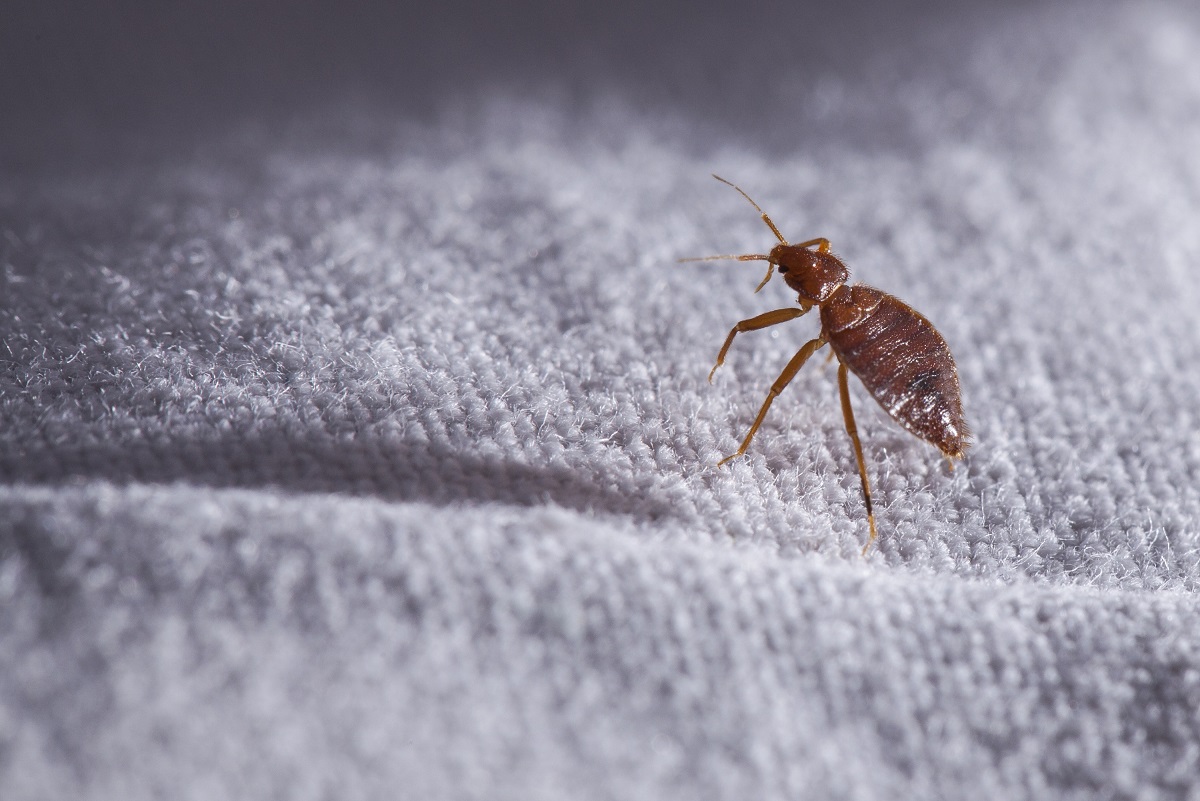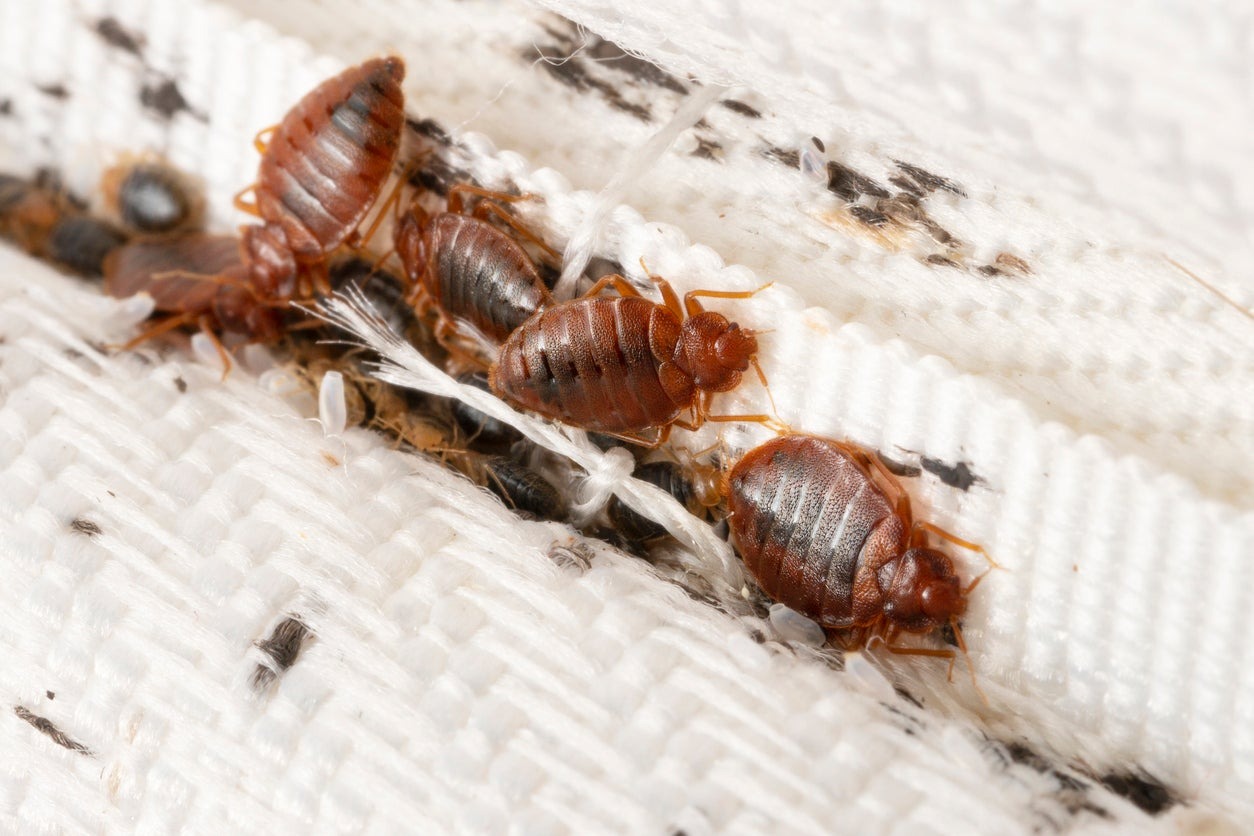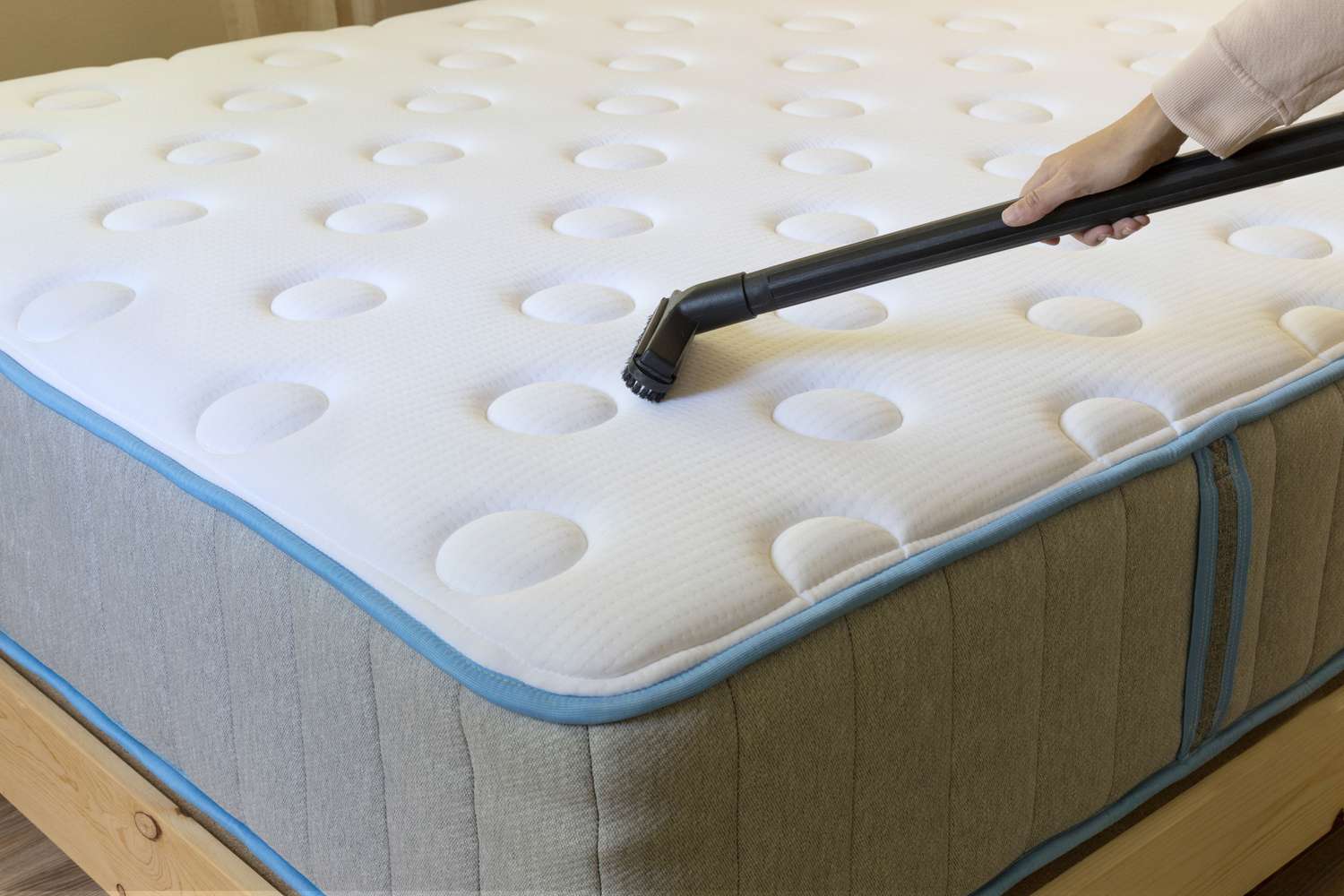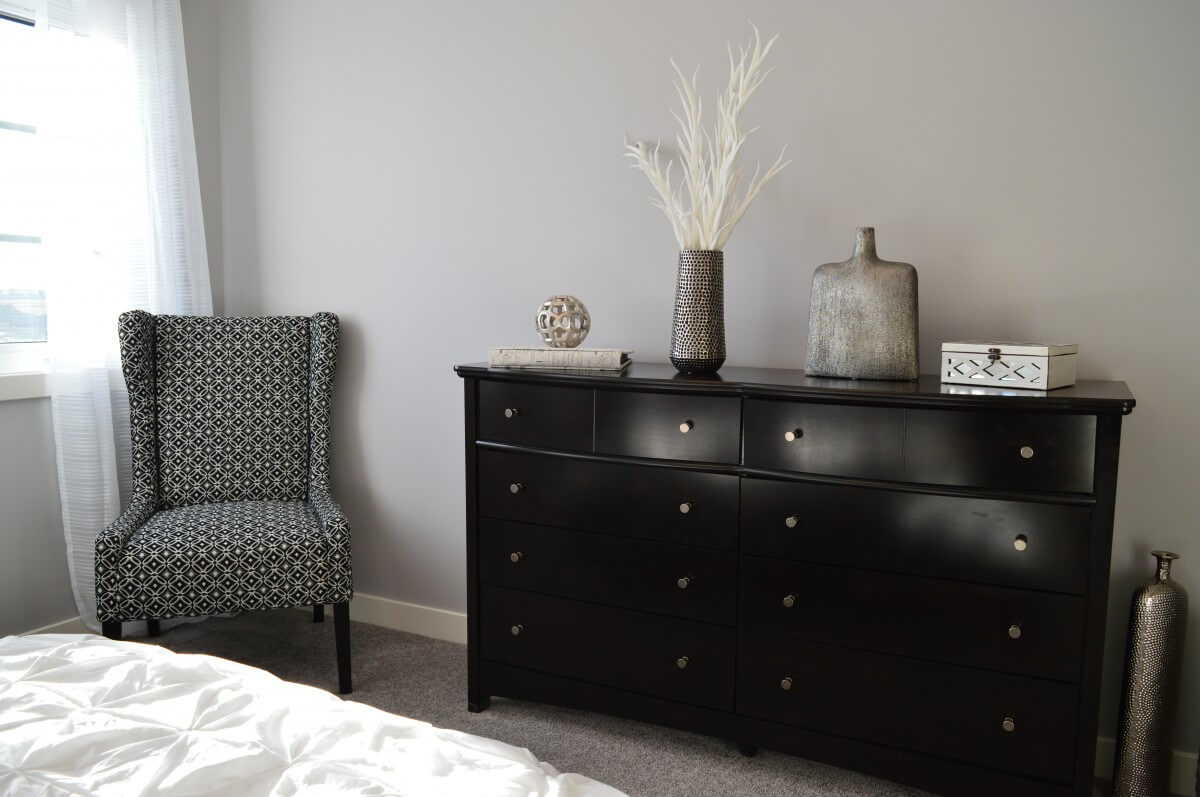Home>Furniture>Bedroom Furniture>How To Get Rid Of Bed Mites


Bedroom Furniture
How To Get Rid Of Bed Mites
Modified: March 2, 2024
Discover effective ways to eliminate bed mites and ensure a healthier sleep environment with our high-quality bedroom furniture.
(Many of the links in this article redirect to a specific reviewed product. Your purchase of these products through affiliate links helps to generate commission for Storables.com, at no extra cost. Learn more)
Introduction
Welcome to the ultimate guide on how to get rid of bed mites! Have you ever experienced itchy skin, restless nights, or unexplained allergies? If so, your bedroom might be harboring a tiny, yet troublesome, guest – bed mites. These microscopic creatures can wreak havoc on your sleep and overall well-being if left unaddressed.
Bed mites, also known as dust mites, are microscopic insects that thrive in warm and humid environments, such as your bedroom. They feast on dead skin cells and multiply rapidly, turning your peaceful sanctuary into a breeding ground of discomfort and irritation.
In this comprehensive article, we will delve into the signs and symptoms of bed mite infestation and the health risks associated with them. We will also provide you with practical tips on how to identify these pesky creatures and discuss effective preventive measures to keep them at bay. Additionally, we will explore cleaning and maintenance strategies, as well as natural remedies and professional treatment options.
So, if you’re ready to take back control of your bedroom and enjoy a restful night’s sleep, let’s dive in and learn how to defeat bed mites once and for all!
Key Takeaways:
- Say goodbye to pesky bed mites by implementing regular cleaning, washing bedding, and reducing humidity to create an environment less inviting to these pests.
- Natural remedies like diatomaceous earth, essential oils, freezing, and sunlight exposure can effectively reduce bed mite populations and alleviate symptoms.
Read more: How To Get Rid Of Grass Mites On Humans
What are Bed Mites?
Before we dive into the details of how to get rid of bed mites, let’s take a closer look at what exactly these microscopic creatures are. Bed mites, scientifically known as dust mites, are tiny arthropods that belong to the same family as ticks and spiders. They measure only about 0.2 to 0.3 millimeters in size, making them invisible to the naked eye.
Bed mites thrive in warm and humid environments, particularly in bedding, mattresses, pillows, and carpets. These little creatures have a preference for feeding on dead human skin cells, and can produce up to 200 times their own body weight in waste during their short lifespan. It is actually the waste products of bed mites that can trigger allergies and cause health issues for some individuals.
Bed mite infestations are not limited to unclean or unsanitary environments. Even the cleanest homes can harbor these pests, as they readily find their way into your bedding and furniture through airborne particles. Anyone can be affected by bed mites, but individuals who suffer from asthma, eczema, or allergies are more susceptible to their adverse effects.
It’s important to note that bed mites themselves are relatively harmless and do not bite humans. However, they can cause a range of unpleasant symptoms and health issues due to the allergenic proteins found in their fecal matter and decaying bodies. Common symptoms of bed mite infestation include:
- Itchy or irritated skin
- Sneezing and nasal congestion
- Watery or itchy eyes
- Coughing or wheezing
- Difficulty sleeping
Now that we have a better understanding of what bed mites are and the potential problems they can cause, let’s delve into how to recognize the signs and symptoms of an infestation in your home.
Signs and Symptoms of Bed Mite Infestation
Bed mite infestations can often go unnoticed, as these tiny creatures are invisible to the naked eye. However, there are several signs and symptoms that can indicate their presence in your home. By being aware of these indicators, you can take early action to address the issue and prevent further discomfort. Here are some common signs of bed mite infestation:
Allergies and Respiratory Symptoms
One of the most common indications of a bed mite infestation is the development or worsening of allergies and respiratory symptoms. The allergenic proteins present in bed mite waste products can trigger allergic reactions, leading to symptoms like sneezing, coughing, wheezing, a runny or stuffy nose, and itchy or watery eyes. If you notice these symptoms are more pronounced when you’re in bed or have recently awakened, it could be a sign of bed mite infestation.
Itchy and Irritated Skin
Bed mites thrive on dead skin cells, and their bites can leave behind itchy and irritated skin. If you frequently wake up with unexplained rashes, redness, or itching, particularly in areas covered by bedding like your arms, legs, or torso, it may be indicative of bed mite bites.
Read more: How To Get Rid Of Grass Mites
Visible Signs of Infestation
If you suspect a bed mite infestation, you can conduct a thorough inspection to look for visible signs. While you won’t see the actual mites themselves, you may come across these telltale signs:
- Dark stains on bedding: These stains are a result of bed mite excrement, which is a combination of digested blood and waste.
- Tiny white specks on bedding: These specks could be bed mite eggs or molted exoskeletons.
- Presence of dust-like particles: Bed mite waste and particles can accumulate on surfaces and appear as fine dust.
It’s important to note that these signs can also be indicative of other pests or issues, so it’s crucial to consult a professional for a proper diagnosis if you suspect a bed mite infestation.
Increased Symptoms at Night
Bed mites are most active during the night when you’re sleeping and generating heat and moisture. As a result, you may experience intensified symptoms during this time. If you notice that your allergies or respiratory issues worsen when you’re in bed or first thing in the morning, it could be due to bed mite activity.
By being vigilant and recognizing these signs and symptoms of bed mite infestation, you’ll be better equipped to take appropriate measures to eliminate these pesky intruders from your home. In the next section, we will explore the potential health risks associated with bed mites, highlighting the importance of getting rid of them promptly.
Health Risks Associated with Bed Mites
While bed mites themselves are not harmful, their presence can pose several health risks, especially for individuals who are sensitive or allergic to their waste products. Here are some of the potential health risks associated with bed mites:
Allergic Reactions
Bed mite waste contains proteins that can trigger allergic reactions in susceptible individuals. These reactions can range from mild symptoms like sneezing, coughing, and watery eyes to more severe allergic reactions, such as asthma attacks or eczema flare-ups. If you have existing respiratory conditions or allergies, bed mites can exacerbate your symptoms and lead to significant discomfort.
Asthma Aggravation
Bed mite allergens can be a significant trigger for asthma attacks in individuals who have asthma. When exposed to bed mite waste, the airways can become inflamed, leading to wheezing, coughing, shortness of breath, and chest tightness. It is essential for asthma sufferers to minimize their exposure to bed mites to manage their condition effectively.
Eczema Flare-Ups
For individuals with eczema, bed mite infestations can worsen their symptoms. The allergenic proteins present in bed mite waste can cause skin irritation, redness, itching, and flare-ups. By reducing the presence of bed mites in the bedroom, eczema sufferers can find relief and better manage their condition.
Sleep Disturbance and Fatigue
Constant itching, sneezing, and discomfort caused by bed mite infestations can disrupt your sleep. The lack of quality sleep can lead to daytime fatigue, reduced cognitive function, and decreased productivity. To maintain optimal health and well-being, it is crucial to address bed mites and create a sleep environment that promotes restful sleep.
While not everyone may experience severe health issues due to bed mite infestations, it is important to prioritize cleanliness and take appropriate measures to eliminate or control these pests. In the next section, we will discuss how to identify bed mites and differentiate them from other common household pests.
How to Identify Bed Mites
Identifying bed mites can be challenging because they are microscopic and not visible to the naked eye. However, there are a few key characteristics and signs that can help you determine if these pesky creatures have taken up residence in your bedroom. Here’s how to identify bed mites:
Read more: How To Get Rid Of Bed Bugs
Magnification and Microscopic Examination
Since bed mites are tiny, it can be helpful to use a magnifying glass or a microscope to get a closer look. If you suspect bed mites in your bedding or furniture, carefully examine the fabric for any movement or tiny specks that resemble insects.
Physical Appearance
Bed mites have a translucent or off-white color and a round or oval shape. They have eight legs and are arachnids, similar to spiders. However, due to their small size, it is rare to see them without the aid of magnification.
Telltale Signs of Infestation
Although you may not be able to see the bed mites themselves, there are some signs that can indicate their presence:
- Bed Mite Fecal Matter: Look for dark stains or spots on your bedding or furniture. These stains are caused by the accumulation of bed mite waste, which contains digested blood.
- Cast Skins: Bed mites shed their exoskeletons as they grow. These discarded exoskeletons may appear as tiny white or translucent specks on your bedding or other surfaces.
- Presence of Dust Mite Allergens: If you or your family members experience allergic reactions or respiratory symptoms, such as sneezing or watery eyes, especially when you’re in bed, it may indicate the presence of bed mite allergens in your environment.
If you have noticed any of these signs or suspect a bed mite infestation, it is advisable to consult a professional pest control expert for accurate identification and appropriate treatment options.
Preventive Measures to Control Bed Mite Infestation
Prevention is key when it comes to controlling bed mite infestation. By implementing these preventive measures, you can create an environment that is less inviting to these pesky creatures and reduce the chances of a bed mite infestation in your home:
1. Regularly Wash Bedding and Linens
Wash your sheets, pillowcases, blankets, and other bedding regularly in hot water. The high temperature helps to kill bed mites and remove any accumulated dust mite allergens. Be sure to follow the manufacturer’s instructions for proper washing and drying.
2. Use Allergen-Proof Covers
Invest in allergen-proof covers for your mattresses, pillows, and box springs. These covers create a barrier that prevents bed mites from entering or escaping and also help to trap any existing allergens. Make sure to choose covers that are labeled as “dust mite-proof” or “allergen-proof.”
3. Vacuum Regularly
Regularly vacuum your bedroom, paying special attention to mattresses, carpets, rugs, and upholstered furniture. Use a vacuum cleaner with a HEPA filter to ensure that captured bed mite allergens don’t get released back into the air. Vacuuming helps to remove dead skin cells, dust, and other debris that can attract and provide food for bed mites.
4. Reduce Humidity
Bed mites thrive in humid environments, so keeping the humidity levels in your bedroom low can help deter their growth. Use a dehumidifier or air conditioner to maintain humidity at around 50% or lower.
Read more: How To Get Rid Of Bed Bugs On A Mattress
5. Regularly Dust and Clean
Dust surfaces in your bedroom regularly using a damp cloth or microfiber cloth to prevent the buildup of dust mites and allergens. Pay attention to areas like nightstands, dressers, and shelves where dust can accumulate.
6. Limit Bedroom Access for Pets
Pets can carry allergens and shed skin cells that can attract bed mites. Keep pets out of the bedroom or at least restrict their access to minimize the introduction of potential food sources for the mites.
7. Avoid Storing Items Under the Bed
Clutter under the bed creates an ideal hiding place for bed mites. Try to minimize or eliminate storing items like clothing, shoes, and boxes under the bed to reduce potential hiding spots.
By following these preventive measures, you can significantly reduce the risk of a bed mite infestation and create a more allergy-friendly environment in your bedroom. However, if you suspect or confirm a bed mite infestation, additional cleaning and treatment strategies will be necessary, which we will discuss in the following sections.
Cleaning and Maintenance Tips to Get Rid of Bed Mites
When it comes to getting rid of bed mites, thorough cleaning and maintenance are crucial. These tips will help you effectively remove bed mites and their allergens from your home:
Read more: How To Get Rid Of Grass In A Garden Bed
1. Wash Bedding Weekly
Wash your bedding, including sheets, pillowcases, blankets, and mattress protectors, in hot water (at least 130°F or 54°C) once a week. This high temperature will kill any bed mites and remove allergens. If possible, dry your bedding on the hottest dryer setting or hang them in direct sunlight.
2. Vacuum Regularly
Regularly vacuum your mattress, upholstered furniture, carpets, and other soft surfaces in your bedroom. Use a vacuum cleaner with a HEPA filter to trap allergens and prevent them from being released back into the air. Pay special attention to seams, edges, and crevices where bed mites and their waste tend to accumulate.
3. Deep Clean Your Mattress
While vacuuming helps, it’s also important to deep clean your mattress periodically. Use a upholstery cleaner, mattress disinfectant, or a mixture of baking soda and water to clean the mattress surface thoroughly. Allow the mattress to completely dry before placing your clean bedding back on.
4. Freeze Stuffed Animals and Pillows
If you have stuffed animals or pillows that cannot be easily washed, place them in a sealed plastic bag and freeze them for at least 24 hours. The extreme cold temperatures will kill any bed mites present. After freezing, allow them to thaw and air out before using them again.
Read more: How To Get Rid Of Bed Bugs In Pillows
5. Steam Clean Carpets and Furniture
Using a steam cleaner, thoroughly steam clean your carpets, rugs, and upholstered furniture. The hot steam will kill bed mites and remove their allergens effectively. Follow the manufacturer’s instructions for the steam cleaner and allow surfaces to dry fully before use.
6. Dust and Wipe Surfaces
Dust and wipe all surfaces in your bedroom regularly. Use a damp cloth or microfiber cloth to prevent stirring up allergens. Pay attention to areas like nightstands, dressers, and shelves, as well as any decorations or items that collect dust.
7. Reduce Clutter
Minimize clutter in your bedroom as much as possible. Clutter provides hiding places for bed mites and makes cleaning more challenging. Keep your bedroom tidy, organized, and free from unnecessary objects.
Consistently following these cleaning and maintenance tips will help eliminate bed mites and reduce their allergens, creating a healthier and more comfortable environment in your bedroom. However, if the infestation persists or if you prefer a more natural approach, there are several remedies you can try, which we will explore in the next section.
Natural Remedies for Eliminating Bed Mites
If you prefer a more natural approach to eliminating bed mites, there are several remedies you can try. While these methods may not completely eradicate a severe infestation, they can be effective in reducing bed mite populations and alleviating symptoms. Here are some natural remedies to consider:
Read more: How To Get Rid Of A Blocked Nose In Bed
1. Diatomaceous Earth
Diatomaceous earth is a fine powder made from fossilized algae. It is safe for humans but acts as a desiccant, dehydrating and eventually killing bed mites. Sprinkle diatomaceous earth on your mattress, carpets, and other infested areas. Leave it for a few hours, then vacuum it up. Repeat this process weekly until the infestation subsides.
2. Essential Oils
Certain essential oils have natural insecticidal properties that can help repel and eliminate bed mites. Tea tree oil, eucalyptus oil, lavender oil, and peppermint oil are known to have antimicrobial and pesticidal effects. Dilute a few drops of your chosen essential oil with water or a carrier oil, and spray it on your bedding, mattress, or other infested areas. However, be cautious as some people may be sensitive to strong scents or allergic reactions to essential oils.
3. Freezing
As bed mites cannot survive in extreme temperatures, you can freeze smaller infested items like pillows, stuffed animals, or blankets. Place them in sealed plastic bags, and put them in the freezer for at least 24 hours. Afterward, remove them from the freezer and let them return to room temperature before using them again.
4. Hot Water Soaking
If the material allows, soak smaller infested items in hot water at a temperature of at least 130°F (54°C). Bed mites cannot survive in high heat, so this method can help eliminate them. Remember to follow the manufacturer’s instructions and care labels when soaking delicate materials.
Read more: How To Get Rid Of Bed Bugs In A Dresser
5. Sunlight Exposure
Bed mites thrive in warm and humid environments, so exposing infested items to direct sunlight can help kill them. Take your bedding or other infested items outside on a sunny day and leave them exposed for a few hours. The heat and UV rays from the sun will help reduce the bed mite population.
While these natural remedies can be effective in reducing bed mite populations, it’s important to note that they may not completely eliminate severe infestations. If the infestation persists or if you prefer a more robust solution, seeking professional treatment options might be necessary, as we will discuss in the next section.
Professional Treatment Options for Bed Mite Infestation
If you’re dealing with a severe bed mite infestation or if natural remedies haven’t provided satisfactory results, it may be time to consider professional treatment options. Pest control professionals have specialized knowledge and tools to effectively eliminate bed mites and prevent their return. Here are some professional treatment options to consider:
1. Chemical Pesticide Treatment
Pest control professionals may use chemical pesticides specifically formulated to target and kill bed mites. These treatments may involve spraying or fogging the affected areas, such as mattresses, carpets, and upholstered furniture. It’s important to consult with professionals who are trained in handling and applying pesticides safely, and follow their instructions for any necessary precautions or temporary evacuation.
2. Heat Treatment
Heat treatment is another effective method used by professionals to eliminate bed mites. The affected items, such as mattresses, bedding, and furniture, are exposed to high temperatures (around 130°F or 54°C) for a certain duration to kill both adult bed mites and their eggs. This method is non-toxic and can penetrate deep into the materials, ensuring thorough eradication.
Read more: How To Get Rid Of Bed Bugs On A Couch
3. Steam Treatment
Steam treatment involves using steam machines with high temperatures to kill bed mites and their eggs. Professionals direct the steam into mattresses, carpets, furniture, and other infested areas to eradicate the pests effectively. Steam treatment is chemical-free and safe for most materials, but it’s important to ensure that the steam reaches the appropriate temperature to effectively eliminate the bed mites.
4. Allergen Removal and Air Filtration
Professional allergen removal and air filtration services can help eliminate bed mite allergens from your home, reducing the risk of allergic reactions and respiratory symptoms. These services may involve thorough cleaning, vacuuming with HEPA filters, and the use of HEPA air purifiers to trap and remove allergens from the air.
When considering professional treatment options, it’s important to research and select reputable pest control companies with experience in handling bed mite infestations. They will assess the severity of the infestation and recommend the most suitable treatment method for your specific situation.
Remember that preventive measures, regular cleaning, and maintenance are essential for long-term bed mite control. By combining professional treatment with effective preventive strategies, you can ensure a bed mite-free environment and enjoy a peaceful and healthy sleep.
Conclusion
Bed mites, also known as dust mites, may be tiny creatures, but they can have a big impact on your sleep quality and overall well-being. Fortunately, with the right knowledge and strategies, you can successfully control and eliminate bed mite infestations. By following the preventive measures mentioned in this guide, such as regular cleaning, washing bedding, reducing humidity, and vacuuming, you can create an environment that is less inviting to these pests.
Identifying signs of bed mite infestations, such as allergies, itchy skin, and visible signs like dark stains or specks, allows you to take prompt action. Natural remedies like diatomaceous earth, essential oils, freezing, and sunlight exposure can be effective in reducing bed mite populations and alleviating symptoms.
If the infestation persists or if you prefer a more comprehensive solution, professional treatment options are available. Chemical pesticide treatments, heat treatments, steam treatments, allergen removal, and air filtration services provided by pest control professionals can effectively eliminate bed mites and their allergens, providing long-term relief and peace of mind.
Remember, maintaining a clean and hygienic bedroom, washing bedding regularly, and reducing clutter are essential for preventing future infestations. Consistency and adherence to preventive measures will help you create a healthy and bed mite-free environment.
We hope this comprehensive guide has empowered you with the knowledge and tools to tackle bed mite infestations. By implementing the tips and strategies outlined, you can reclaim your bedroom as a sanctuary for rest and rejuvenation. Say goodbye to those pesky bed mites and enjoy the comfort and serenity you deserve!
Frequently Asked Questions about How To Get Rid Of Bed Mites
Was this page helpful?
At Storables.com, we guarantee accurate and reliable information. Our content, validated by Expert Board Contributors, is crafted following stringent Editorial Policies. We're committed to providing you with well-researched, expert-backed insights for all your informational needs.





